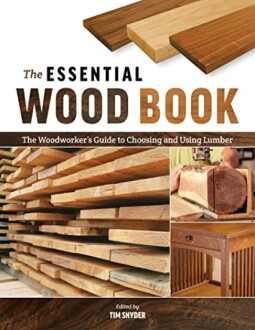
Choosing Eco-Friendly Wood for Your Projects
Key Takeaways
- Understanding the importance of sustainable wood choices.
- Identifying eco-friendly wood types, such as reclaimed, bamboo, and FSC-certified lumber.
- Exploring benefits and considerations when selecting eco-friendly options.
- Learning about sustainable sourcing and its impact on the environment.
- Utilizing resources to find the right products and tools for your woodworking needs.
As woodworking enthusiasts, we often strive to create beautiful projects while being mindful of our environmental impact. One of the most effective ways to do this is by choosing eco-friendly wood. This guide will walk you through different sustainable wood options and how to select the best materials for your projects, ensuring that you contribute positively to the planet.
Why Choose Eco-Friendly Wood?
Opting for eco-friendly wood isn't just a trend; it reflects a commitment to sustainability. Traditional logging practices can lead to deforestation, habitat destruction, and loss of biodiversity. Eco-friendly wood helps mitigate these issues by supporting sustainable forestry practices and promoting responsible sourcing.
Types of Eco-Friendly Wood
There are several eco-friendly wood options you can consider for your projects:
| Wood Type | Description | Benefits |
|---|---|---|
| Reclaimed Wood | Wood sourced from old buildings, furniture or other structures. | Unique character, less environmental impact, saves time and resources. |
| Bamboo | A fast-growing grass that is a strong and sustainable alternative to hardwood. | Regrows quickly, durable, lightweight, anti-bacterial properties. |
| FSC-Certified Wood | Wood sourced from forests certified by the Forest Stewardship Council. | Ensures sustainable management, preservation of biodiversity. |
| Farmed Timber | Wood grown specifically for harvesting through sustainable practices. | Controlled growth conditions, reduced pressure on natural forests. |
Benefits of Using Eco-Friendly Wood
Choosing sustainable wood not only benefits the environment but can also enhance your projects:
Pros
- Reduces carbon footprint.
- Supports sustainable forestry practices.
- Unique aesthetic appeal.
- Provides higher durability in many cases.
Cons
- Availability may be limited compared to traditional lumber.
- Potentially higher costs depending on the source.
Factors to Consider when Choosing Eco-Friendly Wood
When selecting eco-friendly wood for your projects, keep the following factors in mind:
- Sourcing: Ensure the wood is sourced responsibly and certified where possible.
- Quality: Look for quality and durability in the wood species you choose.
- Aesthetic: Consider the appearance and finish of the wood for your project.
- Budget: Establish a budget as some eco-friendly options may be more costly.
Getting Started with Eco-Friendly Projects
Now that you're informed about the benefits of eco-friendly wood, how do you start incorporating it into your projects? First, consider familiarizing yourself with your local suppliers and what sustainable options they provide.
Recommended Readings
For more in-depth information about different wood types and materials, check out our article on Wood types and their uses and explore options tailored for your needs.
Essential Tool Resources
Investing in good woodworking tools is crucial for your projects. Explore our guide on Woodworking tools for recommendations on essential equipment.
Product Highlight
Enhance your woodworking skills by understanding the materials you use. Check out The Essential Wood Book for comprehensive insights into choosing the right lumber.
The Essential Wood Book
A comprehensive guide to choosing and working with various types of wood, perfect for both beginners and experts.
Learn MoreConclusion
Choosing eco-friendly wood is an essential step towards sustainable woodworking. By being mindful of your material choices, you can create beautiful projects while preserving the environment. Stay informed, choose wisely, and enjoy the fulfilling journey of woodworking with a sustainable mindset.
Additional Resources
For further insights on sustainable practices in woodworking, you may find helpful information in our article on Woodworking tool maintenance, which can help you prolong the life of your tools and wood materials.




